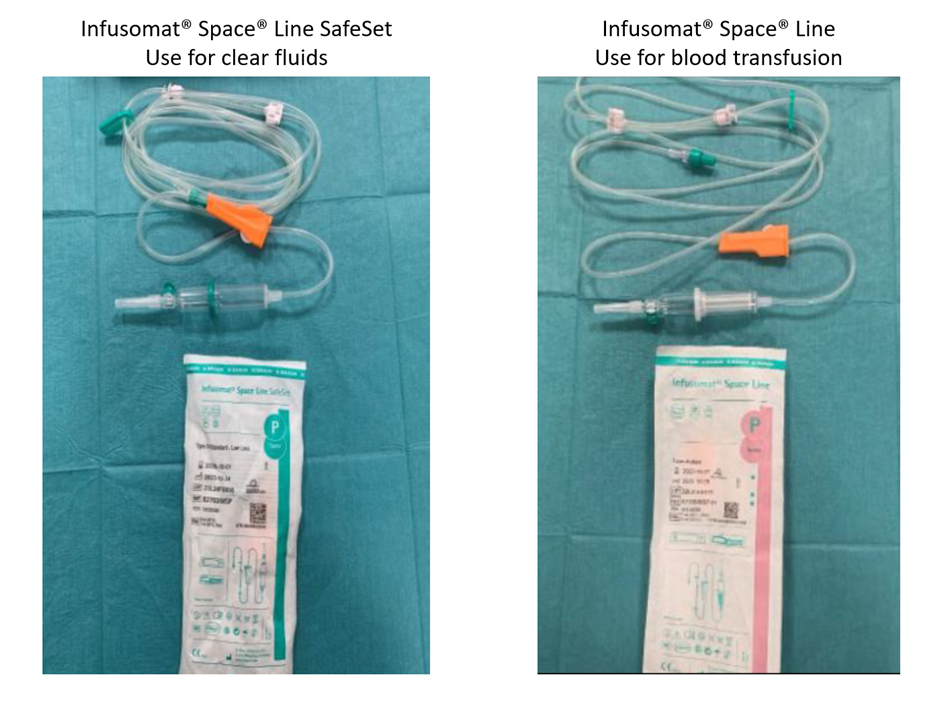肉视频wishes to share key learning from a case where harm occurred related to an exchange transfusion.
Case summary
During an exchange transfusion a baby suffered a cardiac arrest, potentially due to hypovolaemia, as a result of inadequate volume replacement.
An incorrect giving set (for clear fluids rather than blood) was used with an infusion pump, set to infuse blood at a steady rate, while blood was removed in aliquots.
The volumetric infusion pump completed sufficient peristaltic motions to infuse the prescribed amount of blood under normal conditions, however due to the incorrect giving set and associated filter, post event investigation found that the pump infused less than the prescribed amount which likely contributed to cardiorespiratory instability.
This case was investigated by MNSI and a has been issued to support local trusts to review their practice with regards to exchange transfusion.
肉视频wishes to draw attention to the similarity in appearance of both the packaging and appearance of the clear fluid and blood giving sets. In this case Braun Infusomat giving sets were in use. These are shown below.

Exchange transfusion is an uncommon procedure and there are many potential complications.
肉视频recommendations for safe practice include:
- Neonatal units should have an exchange transfusion guideline outlining a standardised approach, including transfusion triggers, characteristics of blood for exchange, equipment required, technique, monitoring during procedure and post procedure care. Points raised in the MNSI bullet should be reviewed for inclusion.
- The equipment checklist should include a double-check to ensure you have the correct giving set which contains a filter suitable for blood administration.
- The procedure should be performed by competent, trained neonatal staff.
- The procedure should be supervised by additional competent, trained neonatal staff who can maintain oversight and are not task focused.
- Use of an exchange transfusion record chart such as the example attached to allow accurate recording of blood volume throughout the procedure.
- Regular observations should be recorded with intermittent checks of acid/base balance, haematological parameters (PCV/Hb), electrolyte (Na/K/Ca) and glucose measurement on blood gases (or laboratory where appropriate). Changes suggestive of deterioration should trigger temporary cessation of the procedure and appropriate escalation.
肉视频Safety Alerts
肉视频can help publicise safety alerts to our members. For urgent alerts please contact the 肉视频office or call 020 7092 6085/6. 肉视频can anonymise alerts before circulation if needed.
